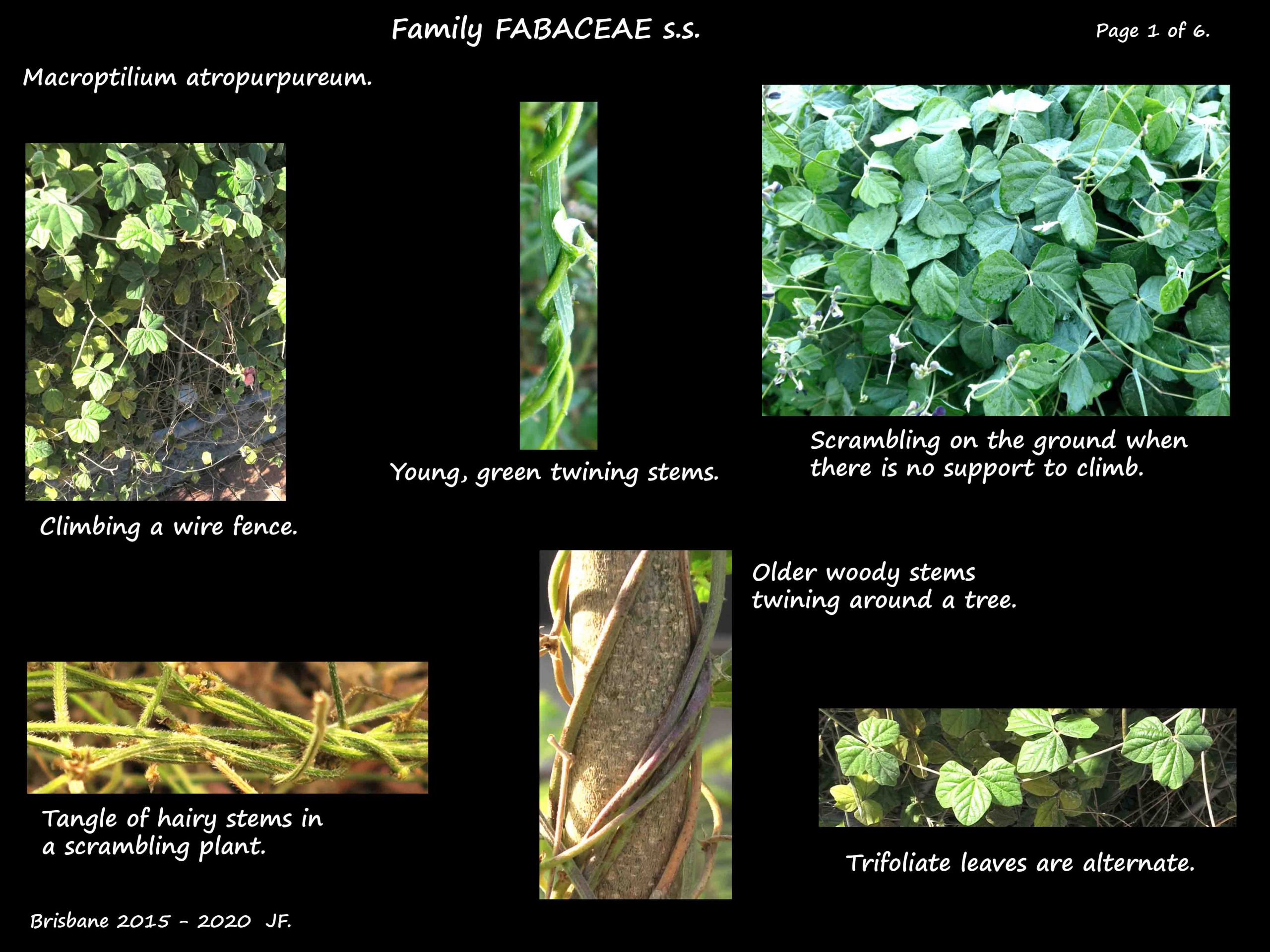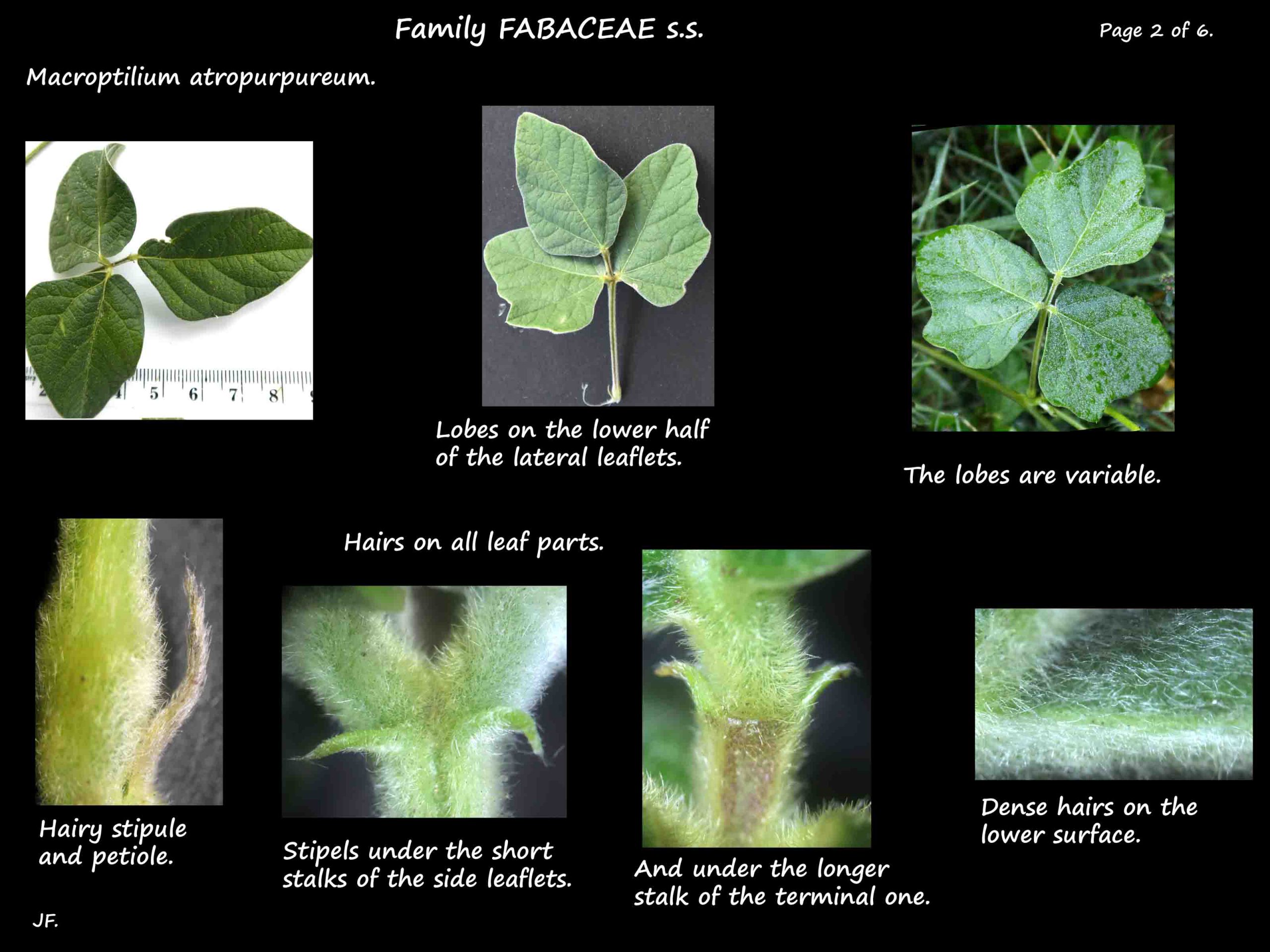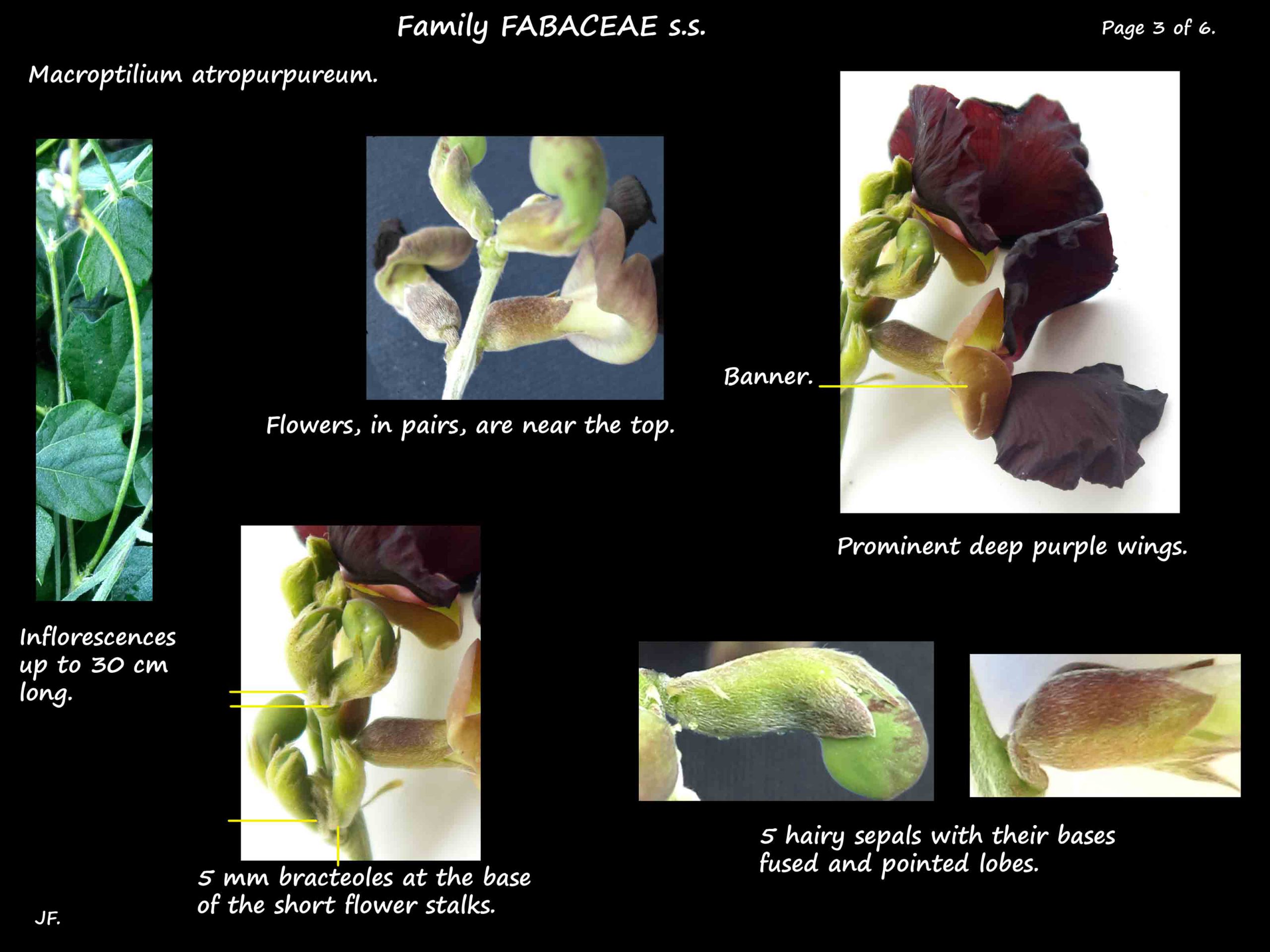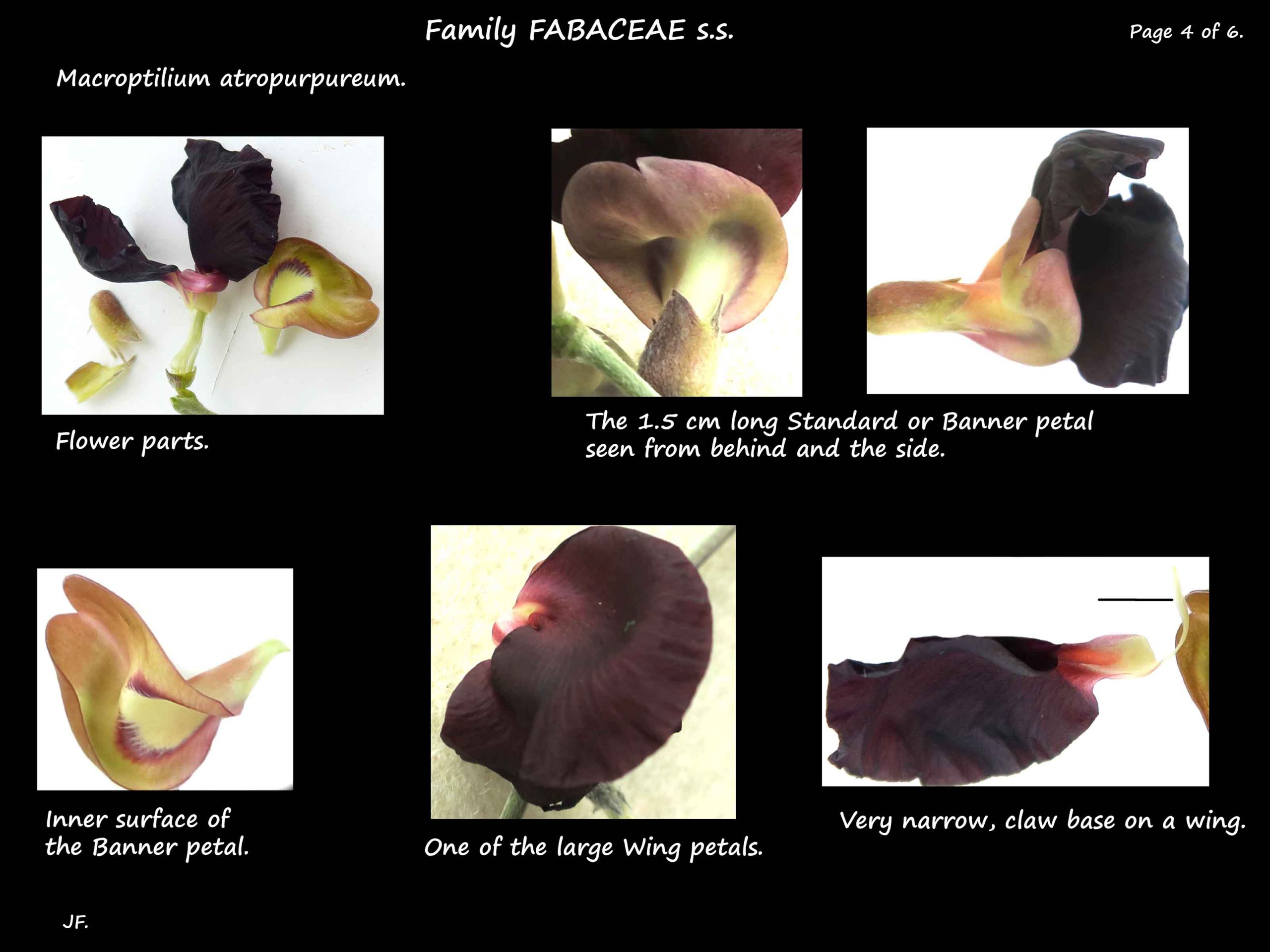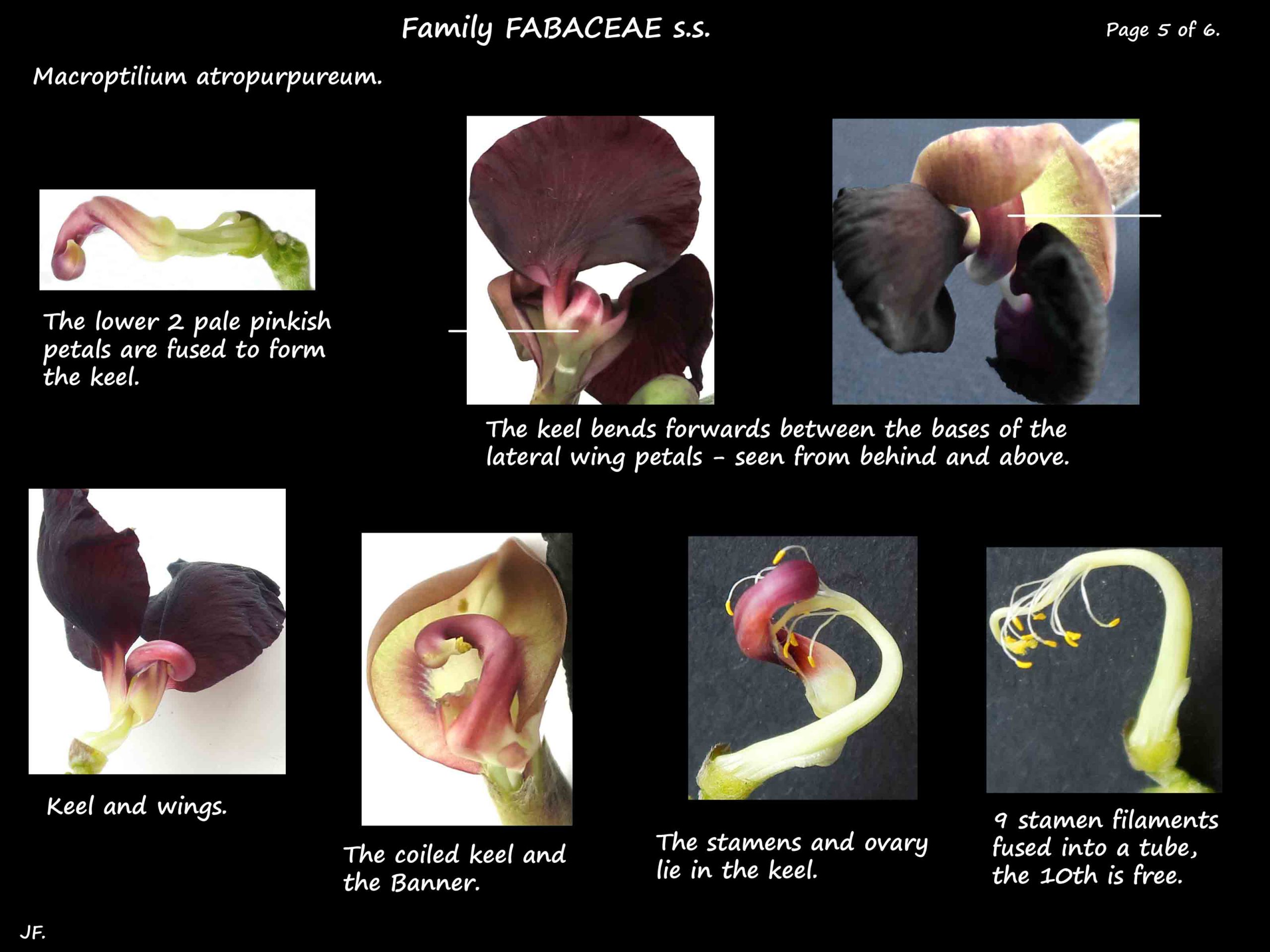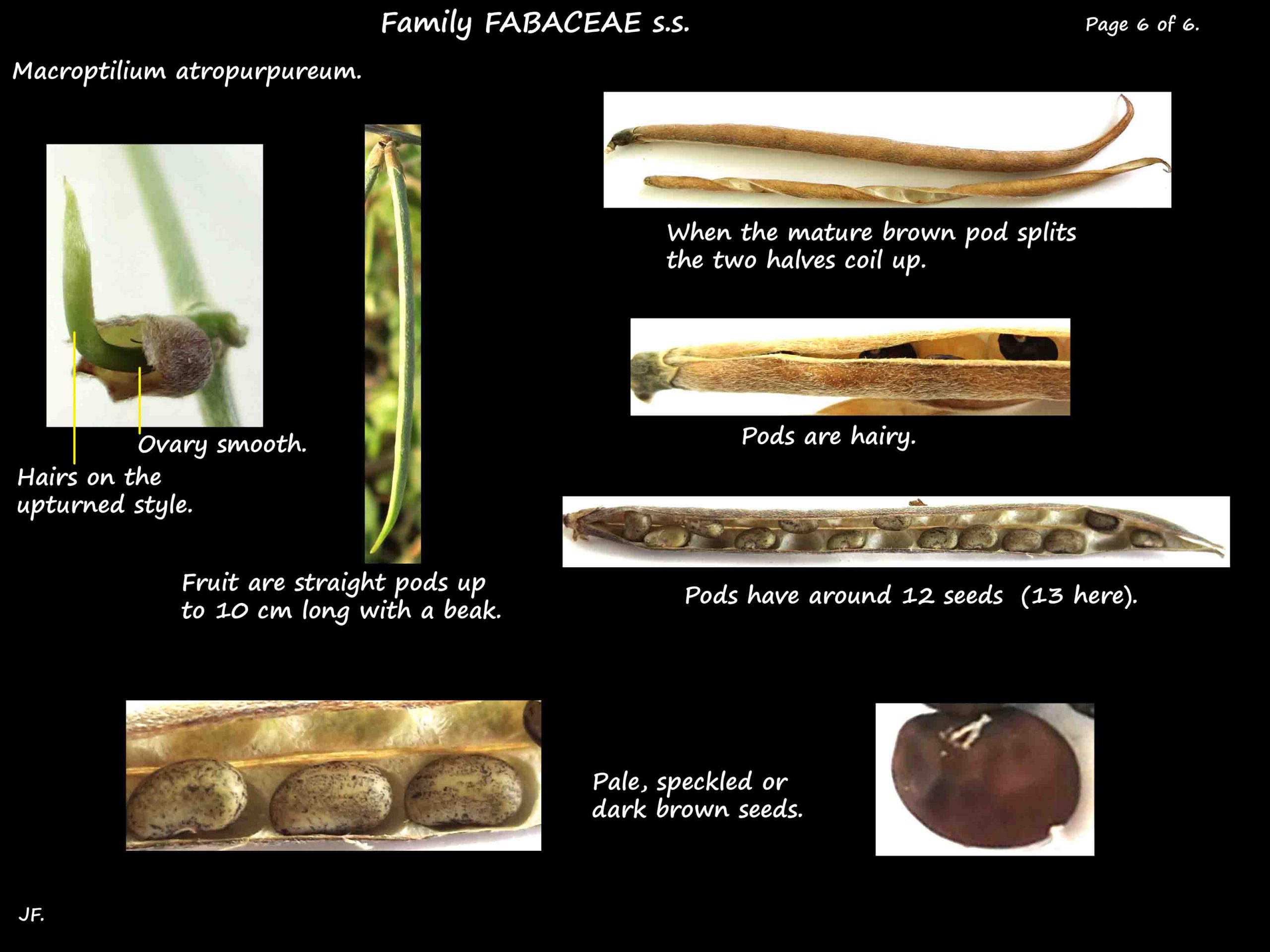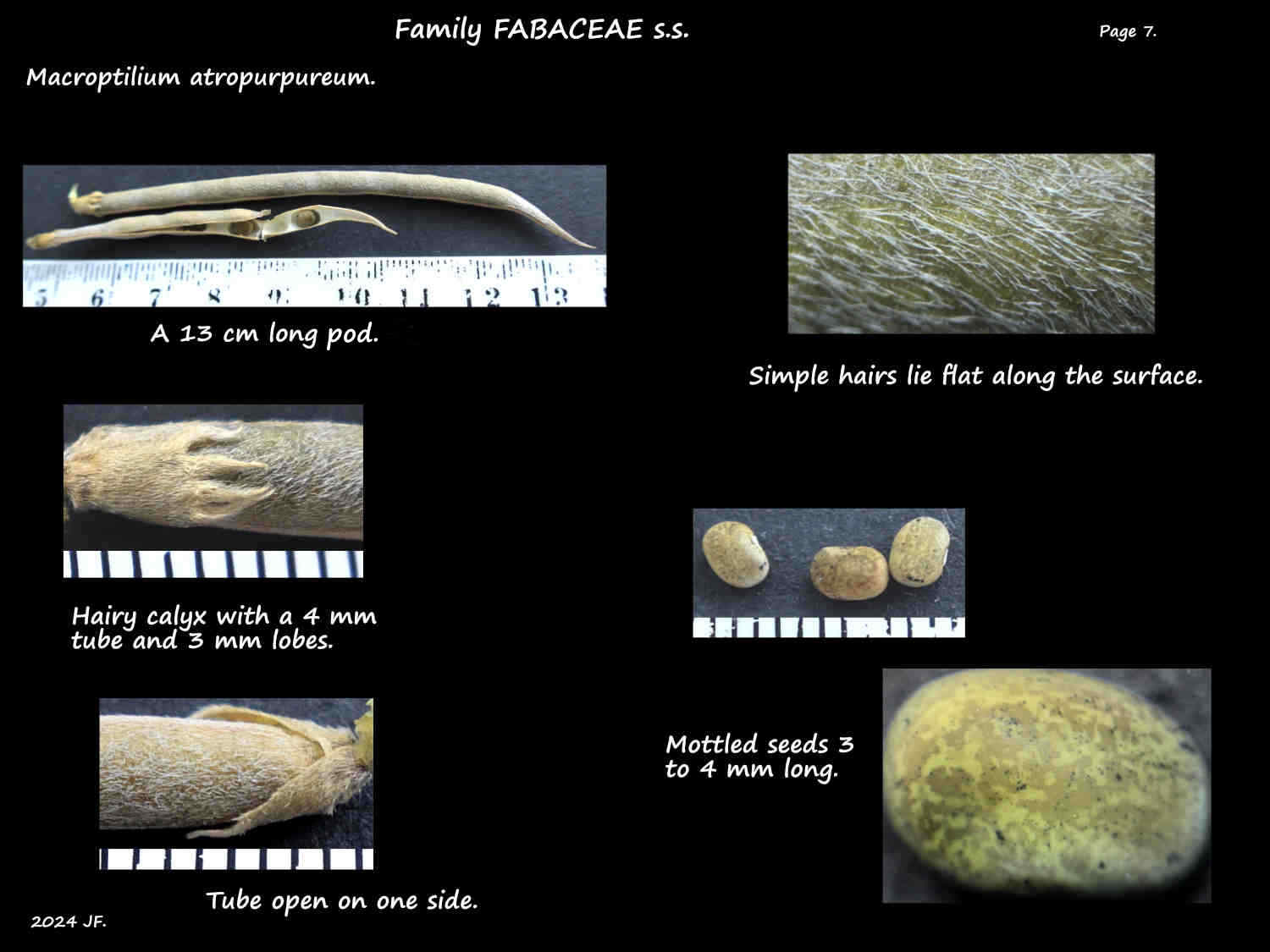Macroptilium atropurpureum.
Family Fabaceae s.s. (Family Fabaceae s.l. > Subfamily Faboideae).
The Cowpea is native to Central and Southern America with 2 species found in Queensland.
It is widely naturalised, and a weed, in S. E. Queensland.
They are perennial, twining vines or, without support they are creepers.
They have deep taproots and the hairy stems can extend for up to 5 m.
Roots can form where stems lie on the ground.
The alternate, trifoliate leaves are up to 12 cm long and on stalks up to 6 or 8 cm long.
There are hairy stipules about 5 mm long at the petiole base.
Leaflets, about 6 cm long, are ovate or elliptic.
The side leaflets are on stalks about 0.5 cm long and the end one is on a 1 cm stalk.
There are small, hairy stipels at the base of the leaflet stalks.
The side pair of leaflets often have 1 or 2 blunt lobes on the lower half.
The lobe development on the leaflets is vary variable.
There are hairs on the dark green upper surface and edge of the leaf.
The lower surface is densely hairy and whitish.
Inflorescences are spikes around 20 or 30 cm long with long stalks or pedicels.
Towards the top are up to 12 flowers, often in opposite pairs.
The pea-like flowers, up to 2.5 cm long, are a very dark purple that is almost black.
Flowers are on a 1 to 2 mm long stalk with hairy bracts around 5 mm long.
Flowers, with parts in 5’s, can be found most of the year.
The hairy sepals, up to 8 mm long, have their bases fused with pointed lobes on the rim.
The upper petal (standard or banner), around 1.5 cm long, is obovate with a narrow base.
It is shallowly bilobed and the upper half bends up and also sometimes backwards.
It lacks the intense dark colour of the wing petals being a yellow-green with a yellow base and purple markings.
The 2 side or wing petals are the most prominent part of the flower.
They are around 2 cm long, slightly wrinkled and a deep blackish-purple.
Below they taper to a thinner reddish section then a pale, linear base.
The lower 2 pinkish petals, about 1.7 cm long, have a white base.
They are fused to form the keel.
This bends up between the bases of the wings then coils through 360 degrees.
Nine stamens have their filaments fused for about 1 cm.
The tube formed is open on one side.
The 10th stamen is free and shorter being around 0.5 cm long.
There is a nectiferous disc between the stamens and ovary.
The 8 mm long ovary has a hairy style around 1.2 cm long.
The style initially bends at 90 degrees to the ovary.
The fruit are hairy, straight, narrow pods up to 10 cm long with a beak.
Ripening from green to brown they contain around 12 seeds.
Pods split suddenly along both sutures and the 2 sides twist.
The flattened, ovoid or kidney-shaped seeds are speckled in dark and light brown.
J.F.
